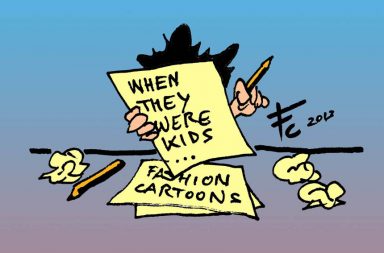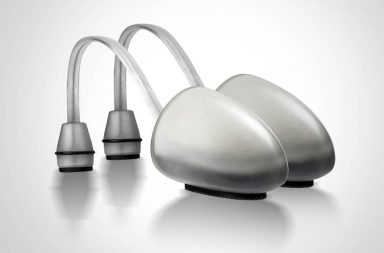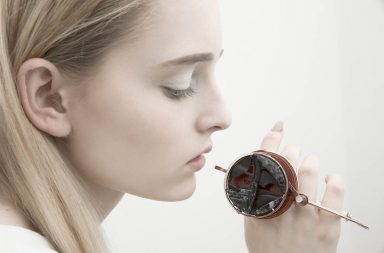It’s been awhile since terms like ethical fashion, environmentally friendly fabrics or cruelty-free fashion became part of our vocabulary in the fashion world.
A lot has been written on the topic and we here at So Catchy! definitely aren’t pretending to be authorities on the matter but we would like to sum up the terminology, clear up some of the concepts and, above all, introduce you to some of the labels and online stores where you can find this type of clothing, whether you’re into the ethical movement or cruelty-free, or both.
In the first place, let’s start with the fact that ethical fashion and “cruelty-free” don’t always refer to the same thing.
Ethical Fashion is a term that is used to define clothing produced in a sustainable way. This includes respecting the rights of workers who produce the garment, fair economic conditions and respect for the environment. Typical fabrics found in the movement are non-polluting, both during the production phase and after they’ve been discarded. The most popular ones are linen and organic cotton. However, ethical fashion can also refer to a label that uses animal skin, as long as it fulfills all of the parameters.
Cruelty-Free Fashion is a term used by the Vegan world to promote fashion made without sacrificing animals. This isn’t limited only to skins like leather and suede, it includes silk, wool, mohair and feathers.

PETA, People for the Ethical Treatment of Animals suggests reading the tags to see what clothes are made of. They support the use of synthetic leather, nylon, polyester, cotton, microfibers, hemp and more. If you want to see how a Vegan dresses, you should check out this article on their site, “How to wear Vegan”.
The number of brands that have decided to have an alternative, cruelty-free line in their collections is growing but without a doubt, the biggest name in high-end fashion is Stella McCartney
Vegan alternatives to leather are usually called Vegan leather or Synthetic leather. The latter, cheaper to produce, are made from PVC or polyurethane while Vegan leather includes formulas with microfibers, acrylic, polyamides and more. Some of the more well-known kinds are: Birkibuc, Birko-Flor, Kydex, Lorica, PVC and Vegetan. However, there’s not a lot of information about the pollution that is caused as a result of the manufacturing process. Naugahyde, another kind of ‘fake’ leather produced only in Wisconsin (USA) is an alternative that most closely resembles real leather.
The science behind the production of these synthetic materials is even more elaborate than it seems. Do you remember the presentation of the first ‘in vitro’ hamburger in 2013? Bioprinting animal skin, known as biofabrication is even closer to becoming a reality on a commercial scale.

The Brooklyn-based start-up “Modern Meadow”, pioneers in 3D biofabrication, wants to bring 3D bioprinted skins to the fashion industry, as well as other materials, rather than meat. Why? Because Modern Meadows believes that the public will be more likely to accept a ‘laboratory’ product for their clothes than they will be to eat a 3D printed steak. They’ve already done their first tests and the results look promising. Now we only have to wait for the first practical application of the material in shoes or a bag. Their process is not only cruelty-free, it’s also environmentally friendly and wastes fewer resources than raising livestock for the same purpose.
Andras Forgacs’ TED Talk about biofabrication without killing animals.The future of leather and skin is almost here and it looks birght for animals and the environment. While we’re waiting, here’s a list of international vegan brands that we’ve picked out for you.
Vegan Labels:
Leanne Hilgart was on everyone’s lips in 2013 as the first designer to produce 100% clothes and to show her work on the catwalk at New York Fashion Week.
Free People has doubled its vegan offerings since debuting in 2011. Vegan sales from the label have surpassed the sales of skin-based products in categories like jackets or dresses.

FREEDOM OF ANIMALS is a sustainable and cruelty-free luxury bag line.

M4d3 Shoes has created a line of vegan shoes in collaboration with PETA.
Sole Society. Although they offer leather, their vegan section already makes up half of their line of bags and they’re hoping to do the same with shoes.
Vegan Boutique Alternative Outfitters
Vegan footwear

Vegan Bags
Clothes, Bags and Vegan Accessories
Ethical and Cruelty Free
More lists of Vegan lines here, here, and here.
Vegan magazines
Information from www.ivu.org: Terminology of skins.
More information here.
To make one coat from skin, depending on the type of animal it is taken from, you would need the following number of animals: 300 chinchillas, 17 lynxes, 20 baby seals, 8 adult seals, 60 bison, 20 otters, 20 foxes, 60 pine martens, 250 squirrels, 12 wolves…
Alpaca: Wool from the Bolivian Alpaca.
Angora: Fur from the Angora rabbit.
Suede & Napa leather: goatskin or sheepskin.
Astrakhan: leather from the skin of the Karakul sheep fetus obtained by slaughtering the mother. Once it has bled out, its carcass is hung and the abdomen is opened to extract the uterus. The fetus is removed and skinned. To produce only one garment requires the skin of 30 fetuses.
Cashmere: wool from Cashmere goats.
Camelhair
Shells
Leather: the skin of dead animals, usually from cows.
Felt: Felt is a fabric whose main characteristic is that to product it, no sewing is necessary. It is produced by matting, condensing and pressing fibers together, using layers of wool or fur from different animals and their natural property of adhering to each other.
Wool
Mohair: goat hair.
Fur or skin (chinchilla, bison, fox, etc.).
Pearls
Feathers (Video)
Romey Marsh
Silk (Bombix Mori, Tussah, etc.): the silkworms are boiled alive during metamorphosis, inside the silk cocoon. There is an alternative, ‘Peace silk’ or Ahimsa silk, that can be obtained after the butterfly has left the cocoon.
Written by Anabel Cuervas & Lourdes Rodríguez
Translation and Layout by Michael Padilla





